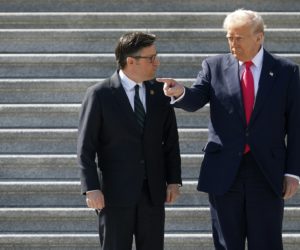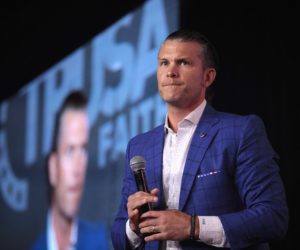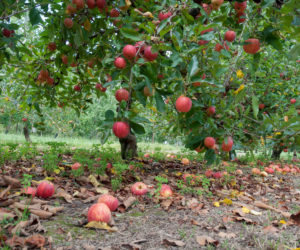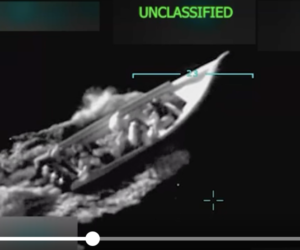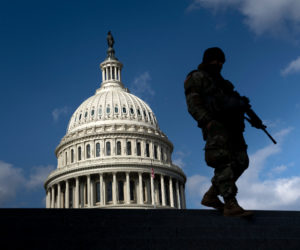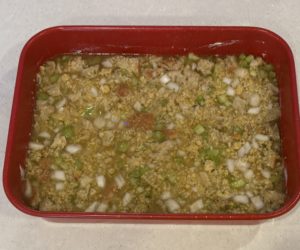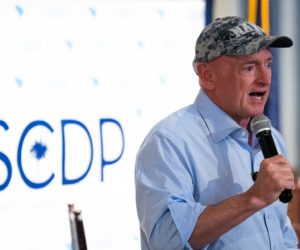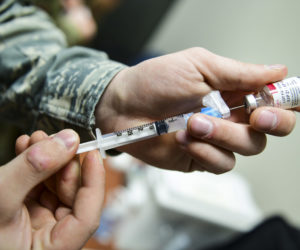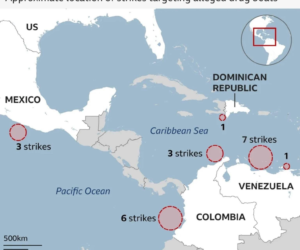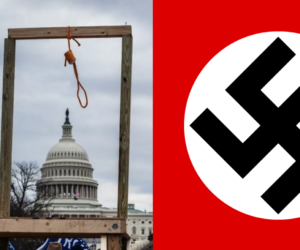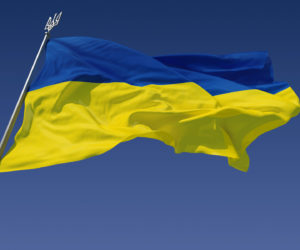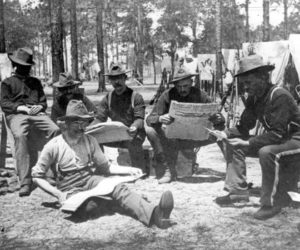Most of us know about and are immensely proud of the 80 intrepid heroes who on April 18, 1942, in response to and with the nation still reeling from the devastating Japanese sneak attack on Pearl Harbor, took off in 16 B-25 bombers from the aircraft carrier USS Hornet on a top-secret mission to bomb Japan.
Led by Lt. Col. James H. “Jimmy” Doolittle, these heroes came to be known as the Doolittle Tokyo Raiders. The mission? A mission so difficult, risky and improbable that today it would be rightly called “Mission Impossible.” A “one-way” mission because these brave men knew they could not return to the carrier after the raid. They knew that, if they managed not to get shot down during the mission, they would have to attempt to make their way to China or Russia and quite possibly crash-land, ditch or bail-out on the way and, if captured by the Japanese, face imprisonment, torture and even execution — as some of these men did. A mission so dangerous that the mission commander, Doolittle, gave his men the chance to back out — but no one did, all 80 men answered the call.
Lieutenant Colonel James H. Doolittle, USAAF (left front), leader of the raiding force, talks with Captain Marc A. Mitscher, USN, Commanding Officer of USS Hornet (CV-8), on board Hornet sometime before the 18 April 1942 launch of the raiding airplanes.Members of the Army Air Forces flight crews, and the wing of one of their B-25B bombers, are in the background. (Official U.S. Navy Photograph, National Archives collection. Courtesy Naval History and Heritage Command)
Among the awards and decorations that many of the Raiders received were the Distinguished Flying Cross, the Silver Star, Purple Heart. Doolittle received the Medal of Honor from President Roosevelt. In addition, the Doolittle raiders received decorations from the Chinese government
But not so many may know the touching story of the 80 silver goblets and the “Goblet Ceremony”.
In December 1946 Gen. Doolittle and his fellow Raiders gathered to celebrate his birthday, and that event turned into an annual reunion. The Raiders have been holding such reunions for 68 years.
In 1959, the city of Tucson, Ariz. presented the Doolittle Raiders 80 sterling silver goblets, each engraved with the name of a Raider, twice, the second upside down so that the name is always readable. The silver goblets were housed in a special glass-enclosed case at the Air Force Academy in Colorado Springs, but in 2005 the National Museum of the United States Air Force at Wright Patterson Air Force Base became the permanent home for these historic goblets. (See lead image)
At each of their reunions, the surviving Doolittle raiders held a solemn “Goblet Ceremony” to honor those Raiders who had departed since the last reunion by toasting them and then turning the deceased men’s goblets upside down.
They have been doing this for 68 years.
It was the intention that, when there were only two Raiders, these last two legends would drink one final toast to their departed comrades using a bottle of cognac distilled in 1896 — the year of Doolittle’s birth — as was Doolittle’s wish.

Retired Lt. Col. Richard “Dick” E. Cole opens the 1896 bottle of cognac before The Doolittle Tokyo Raiders shared their last and final toast at the National Museum of the U.S. Air Force Nov. 09, 2013 in Dayton, Ohio. Cole was the copilot of Aircraft No. 1. (U.S. Air Force photo/Desiree N. Palacios)
Air Force Academy cadets hand out a goblet to each Raider with their name on it during The Doolittle Raiders final toast at the National Museum of the U.S. Air Force Nov. 09, 2013 in Dayton, Ohio. (U.S. Air Force photo/Desiree N. Palacios)
Although today there are four Raiders still with us, the Raiders decided, because of their age, to make this year’s toast their final one and declare their mission over.
The four surviving Raiders are: Lt. Col. Richard E. Cole, 98; Lt. Col. Robert L. Hite, 93; Lt. Col. Edward J. Saylor, 93 and Staff Sgt. David J. Thatcher, 92.
And so, on November 9, at the National Museum of the U.S. Air Force, outside Dayton, Ohio, the last Doolittle Raiders made their final toast at an emotional ceremony while thousands watched. (Cole, Saylor and Thatcher participating and Hite watching from his residence due to health concerns.)
Retired Lt. Col. Richard “Dick” E. Cole give the last and final toast at the National Museum of the U.S. Air Force Nov. 09, 2013 in Dayton, Ohio. (U.S. Air Force photo/Desiree N. Palacios)
The U.S. Air Force News Service:
The Air Force hosted the famed Doolittle Tokyo Raiders’ final toast to their fallen comrades during an invitation-only ceremony Nov. 9 at the National Museum of the U.S. Air Force.
“Tonight is a night of conflicting emotions: pride in our Doolittle Tokyo Raiders, sorrow at the end of a mission and a myriad of other emotions,” retired Maj. Lloyd Bryant, the Master of Ceremonies, said as he opened the ceremony.
On April 18, 1942, 80 men achieved the unimaginable when they took off from an aircraft carrier on a top secret mission to bomb Japan. These men, led by Lt. Col. James H. “Jimmy” Doolittle, came to be known as the Doolittle Tokyo Raiders.
“The Doolittle Raiders are the epitome of this innovation spirit of Airmanship. We owe these 80 men as well as their army and navy teammates a debt of gratitude,” said Acting Secretary of the Air Force Eric Fanning. “Gentlemen, once again, thank you for what you did for your country.
“Thank you for representing all those you served with and thank you for inspiring all of us everyday since then. Godspeed.”
Chief of Staff of the Air Force Gen. Mark A. Welsh III followed Fanning.
Chief of Staff of the Air Force Gen. Mark A. Welsh III at the podium honoring The Doolittle Tokyo Raiders. (U.S. Air Force photo/Desiree N. Palacios)
“As far as I’m concerned, this is the greatest professional honor I’ve ever had to speak here with this crowd at this event,” Welsh said.
“The very first book I read as a young guy was Thirty Seconds over Tokyo. It was given to me by my father, also a World War II vet, with the words that I should read it closely because this is this what America is all about. I’ve never forgotten those words.
“The Doolittle raiders have been celebrated in book and in journals … in magazines … in various papers. They’ve had buildings named after them … had streets named after them. People play them in movies.
“They hate to hear this, but Jimmy Doolittle and his Raiders are truly lasting American heroes, but they are also Air Force heroes. They pioneered the concept of global strike … the idea that no target on earth is safe from American air power.
“In the last two weeks gentlemen, I’ve received emails from a number of today’s bomber crew members. They asked me to assure you and your families this evening that your legacy is strong and safe with them.
Welsh ended his speech by thanking the Raiders for their service to the nation.
“Sir (Cole), for you and the brothers beside you … your service was a gift to a nation at war … the family and friends who stood proudly beside you since and to hundreds of thousands of American Airmen who continue to stand on your shoulders and hope to live to your example. Airpower … the raiders showed us the way,” he said.
Fanning and Welsh presented the Doolittle Raiders with an Eagle as a token of their appreciation and gratitude.
Cole was then asked to open the 1896 Cognac and give a toast. The year of the bottle of cognac is Doolittle’s birth year.
“Gentlemen, I propose a toast,” Cole said. “To the gentlemen we lost on the mission and those who have passed away since.
“Thank you very much and may they rest in peace,” he ended.
The Doolittle Raiders received a standing ovation from the crowd, but before closing the ceremony retired Col. Carroll “C.V” Glines, the historian for the Doolittle Raiders and a distinguished author, said, “This concludes the ceremony and also completes a mission.”
There were several other events honoring the Doolittle raiders, events attended by am estimated 10,000 people and which included a B-25 bomber flyover and the placing of a wreath at the Doolittle Raider monument outside the museum.
Lead Image: The 80 silver goblets in the ceremony were presented to the Raiders in 1959 by the city of Tucson, Ariz. The Raiders’ names are engraved twice, the second upside-down. During the ceremony, white-gloved cadets pour cognac into the participants’ goblets. Those of the deceased are turned upside-down. (U.S. Air Force photo/Desiree N. Palacios)

